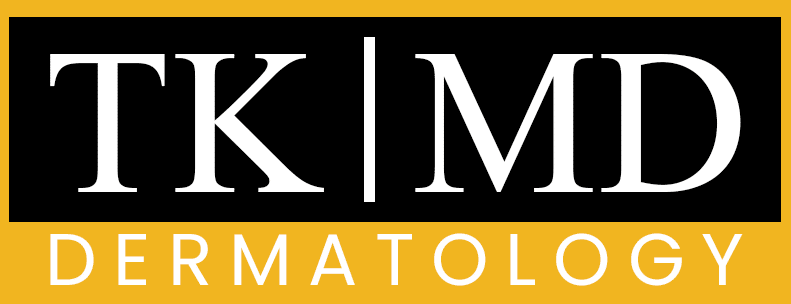When we think about lice, our minds often conjure images of discomfort and embarrassment. Lice are tiny, wingless insects that thrive on the human scalp, feeding on blood. They are most commonly found in children, but anyone can become infested.
Understanding lice is crucial for effective treatment and prevention. There are three main types of lice that affect humans: head lice, body lice, and pubic lice. Head lice are the most prevalent, especially among school-aged children, as they spread easily through close contact and shared personal items.
Lice are not a sign of poor hygiene; rather, they are a common nuisance that can affect anyone. They reproduce quickly, laying eggs (nits) that attach to hair shafts, making it essential for us to recognize the signs of an infestation early. The life cycle of a louse includes three stages: egg, nymph, and adult.
Each stage requires a human host to survive, which is why infestations can spread rapidly in environments like schools and daycare centers. By understanding the biology and behavior of lice, we can better equip ourselves to tackle an infestation effectively.
Key Takeaways
- Lice are tiny insects that infest the scalp and feed on blood, causing itching and discomfort.
- Common signs of lice infestation include itching, visible lice or nits, and sores on the scalp.
- Over-the-counter lice treatments like shampoos and combs are effective in killing lice and nits.
- Prescription lice treatments may be necessary for severe infestations or if over-the-counter options are ineffective.
- Natural remedies such as tea tree oil and mayonnaise can also be used to treat lice infestations.
Signs and Symptoms of Lice Infestation
Recognizing the signs and symptoms of a lice infestation is the first step in addressing the problem. One of the most common indicators is intense itching on the scalp, which occurs due to an allergic reaction to the bites of the lice. This itching can lead to scratching, which may cause secondary infections or skin irritations.
We should be vigilant for other signs as well, such as the presence of small white or yellowish eggs (nits) attached to hair strands close to the scalp. In addition to itching and nits, we may notice other symptoms that can help us identify a lice problem. For instance, we might see small red bumps or sores on the scalp from scratching.
Sometimes, we may even find adult lice crawling on the scalp or in the hair. It’s important for us to conduct regular checks, especially in children, as early detection can prevent a more extensive infestation. By being proactive and observant, we can take swift action to eliminate lice before they become a larger issue.
Over-the-Counter Lice Treatment Options

When it comes to treating lice, over-the-counter (OTC) options are often the first line of defense for many of us. These treatments typically contain insecticides like permethrin or pyrethrin, which are designed to kill lice and their eggs. We can find these products in various forms, including shampoos, lotions, and sprays.
It’s essential for us to carefully read the instructions and follow them closely to ensure effectiveness. While OTC treatments can be effective for many people, we should also be aware that some lice may develop resistance to these chemicals over time. If we find that an OTC treatment does not yield results after a few applications, it may be time to consider alternative options.
Additionally, we should keep in mind that these treatments often require multiple applications to fully eradicate both adult lice and nits. By being diligent and patient with our chosen treatment method, we can increase our chances of success in eliminating lice.
Prescription Lice Treatments: What You Should Know
In cases where over-the-counter treatments fail or if we prefer a stronger solution, prescription lice treatments are available. These medications are typically more potent and may contain different active ingredients such as malathion or benzyl alcohol. Consulting with a healthcare professional is crucial before starting any prescription treatment, as they can provide guidance tailored to our specific situation.
One significant advantage of prescription treatments is their ability to target resistant strains of lice effectively. However, we should also be aware that these medications may come with potential side effects or require special application techniques. It’s essential for us to discuss any concerns with our healthcare provider and ensure that we understand how to use these treatments safely and effectively.
By taking this step, we can make informed decisions about our lice treatment options.
Natural Remedies for Lice Treatment
For those of us who prefer a more holistic approach, natural remedies for lice treatment can be appealing. Various home remedies have been suggested over the years, including essential oils like tea tree oil, lavender oil, and neem oil. These oils are believed to have insecticidal properties that can help eliminate lice when applied correctly.
We might also consider using vinegar or olive oil as a means to suffocate lice or loosen nits from hair strands. While natural remedies can be effective for some individuals, it’s important for us to approach them with caution. Scientific evidence supporting their efficacy is often limited, and results can vary widely from person to person.
Additionally, natural remedies may require more time and effort compared to conventional treatments. If we choose this route, we should remain patient and persistent while monitoring our progress closely.
How to Properly Use Lice Treatment Products

Regardless of the treatment method we choose—whether over-the-counter or prescription—proper application is key to success in eliminating lice. We should start by thoroughly reading the product instructions and ensuring that we have all necessary supplies on hand before beginning treatment. It’s advisable for us to apply the product in a well-lit area so that we can see any nits or lice clearly.
When applying treatment, we should section the hair into manageable parts to ensure even coverage. It’s crucial for us to follow the recommended application time and avoid rinsing too early, as this could reduce effectiveness.
After treatment, we must comb through the hair with a fine-toothed nit comb to remove any remaining nits or dead lice.
This step is vital in preventing reinfestation and ensuring that we have successfully eradicated the problem.
Tips for Preventing Lice Reinfestation
Once we have successfully treated a lice infestation, our focus should shift toward prevention to avoid future occurrences. One of the most effective strategies is educating ourselves and our children about lice transmission. We should encourage practices such as avoiding head-to-head contact during playtime and refraining from sharing personal items like hats, brushes, or hair accessories.
Regularly checking for signs of lice can also help us catch any potential reinfestations early on. We might consider incorporating routine scalp checks into our family hygiene practices, especially after sleepovers or playdates with other children. By fostering an environment of awareness and vigilance, we can significantly reduce the risk of reinfestation within our households.
The Importance of Treating Household Items for Lice
In addition to treating our hair and scalp, it’s essential for us to address household items that may harbor lice or nits. Lice can survive off the human body for a short period; therefore, items such as bedding, clothing, towels, and stuffed animals should be thoroughly cleaned. Washing these items in hot water and drying them on high heat is an effective way to eliminate any lingering lice.
For items that cannot be washed—like certain toys or furniture—we should consider sealing them in plastic bags for at least two weeks to ensure any remaining lice die off without a host. Vacuuming carpets and upholstery is also recommended to remove any stray hairs or nits that may have fallen during treatment. By taking these steps, we create a comprehensive approach to lice eradication that minimizes the chances of reinfestation.
When to Seek Professional Help for Lice Treatment
While many cases of lice can be managed at home with appropriate treatments, there are times when seeking professional help becomes necessary. If we find ourselves dealing with persistent infestations despite following treatment protocols or if we notice signs of secondary infections from scratching, it’s crucial to consult a healthcare provider or a professional lice removal service. Additionally, if we have concerns about potential allergic reactions to treatment products or if our child has special health considerations that complicate treatment options, professional guidance is invaluable.
These experts can provide tailored advice based on our unique circumstances and help us navigate the complexities of lice treatment effectively.
Dealing with the Emotional Impact of Lice Infestation
Beyond the physical challenges posed by a lice infestation, there is often an emotional toll that accompanies this experience.
Many of us may feel embarrassed or anxious about being infested with lice due to societal stigma surrounding these pests.
It’s important for us to remember that lice infestations are common and do not reflect on our cleanliness or parenting abilities.
Open communication within our families about the emotional impact of lice can help alleviate feelings of shame or frustration. We should encourage our children to express their feelings and reassure them that they are not alone in this experience. By fostering an environment of support and understanding, we can help each other cope with the emotional challenges associated with lice infestations.
Lice Treatment for Different Hair Types and Lengths
Finally, when it comes to treating lice effectively, it’s essential for us to consider different hair types and lengths. For individuals with long or thick hair, it may take more time and effort to ensure complete coverage during treatment application. We might need additional products or tools—such as extra nit combs—to manage longer hair effectively.
Conversely, those with short hair may find it easier to treat their infestations quickly but should still be diligent about checking for nits close to the scalp. Regardless of hair type or length, thoroughness in both application and follow-up combing is key to successful treatment outcomes. By tailoring our approach based on individual hair characteristics, we can enhance our chances of completely eradicating lice from our lives.
In conclusion, understanding lice infestations involves recognizing their signs and symptoms while exploring various treatment options available to us—both conventional and natural. By taking proactive measures in prevention and addressing household items effectively, we can minimize reinfestation risks while supporting each other emotionally throughout this challenging experience. Ultimately, knowledge is power when it comes to tackling lice infestations head-on!
If you are looking for solutions to hair loss, dermatologists can provide effective treatments. Dr. Trisha Khanna discusses the various options available in her article Do Dermatologists Treat Hair Loss & Provide Solutions? Another related article by Dr. Khanna explores the benefits of hair patches for a natural look, which can be found in her article Discover Hair Patch Near Me for Natural Look. Additionally, for skin cancer detection, Dr. Khanna recommends Molesafe, a comprehensive program for monitoring moles and detecting skin cancer early.
FAQs
What are lice?
Lice are small, wingless insects that live on the scalp and feed on human blood. They can also be found in eyebrows and eyelashes.
How do you get lice?
Lice are typically spread through head-to-head contact with an infested person. They can also be spread through sharing personal items such as combs, brushes, hats, and headphones.
What are the symptoms of lice infestation?
The most common symptom of lice infestation is itching on the scalp, neck, and ears. You may also notice small red bumps on the scalp and neck.
How are lice treated?
Lice are typically treated with over-the-counter or prescription medicated shampoos or lotions. It is important to follow the instructions carefully and to remove all nits (lice eggs) from the hair.
Can lice be prevented?
To prevent lice infestations, avoid head-to-head contact with infested individuals and do not share personal items such as combs, brushes, hats, and headphones. Regularly check for lice and nits, especially if there has been an outbreak at school or daycare.


